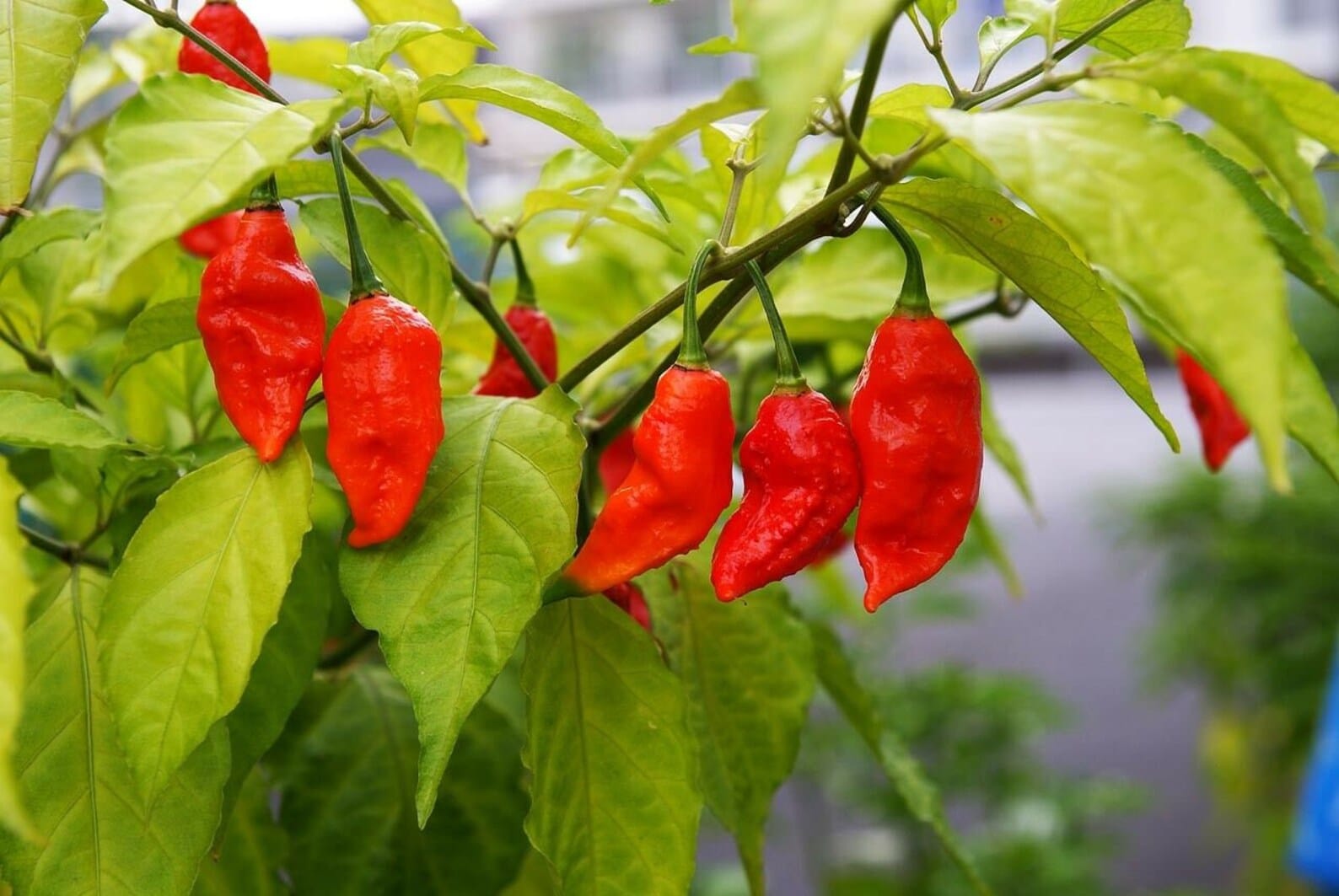This comprehensive guide explores the Naga Jolokia pepper, also known as the “ghost pepper” or “bhut jolokia.” From its origins in Northeast India to its culinary uses and growing tips, we’ll uncover the fascinating story of this fiery chili. Prepare for a deep dive into the pepper’s heat, flavor, and cultural significance.
Unveiling the Origins of Naga Jolokia
The Naga Jolokia’s story begins in Northeast India, specifically the Assam and Nagaland regions. It’s here, amidst the vibrant tapestry of local culture, that this potent pepper thrives. Contrary to its popular name “bhut jolokia,” which translates to “Bhutanese pepper,” its true origins are firmly rooted in Indian soil. The “bhut,” often mistaken for “Bhutanese,” actually means “ghost” in Assamese, likely referring to its intensely spicy “phantom” heat that lingers long after the initial bite. [https://www.lolaapp.com/]
This fiery chili is not just any pepper; it’s a unique hybrid, a cross between Capsicum chinense and Capsicum frutescens. This distinctive parentage contributes to its complex flavor profile and intense heat, setting it apart from other chili peppers.
Measuring the Heat: Scoville Scale and Beyond
Just how hot is the Naga Jolokia? Let’s turn to the Scoville scale, the standard unit for measuring chili pepper heat. The Naga Jolokia boasts a Scoville Heat Unit (SHU) rating typically ranging from 855,000 to 1,041,427 SHU. To put that in perspective, a jalapeño pepper measures a modest 2,500–8,000 SHU. This means the Naga Jolokia can be a staggering 107 to 417 times hotter than a jalapeño, even exceeding Tabasco sauce by an impressive 170 times.1 In 2007, it even held the Guinness World Record for the world’s hottest chili pepper, a testament to its fiery prowess.2
However, environmental factors like soil and climate can influence the SHU rating, meaning one Naga Jolokia might be slightly hotter or milder than another. Ongoing research is exploring these variations, adding another layer of intrigue to this complex chili.
Beyond the Burn: Exploring the Flavor Profile
While heat defines the Naga Jolokia, its flavor profile is equally captivating. Beneath the intense burn lies a surprisingly complex taste. It offers a distinctly fruity flavor, with hints of sweetness that play against the intense heat. Some even detect subtle smoky notes, adding depth and complexity to the overall experience.
Culinary Uses: From India to Global Kitchens
The Naga Jolokia’s unique flavor and heat have made it a prized ingredient in cuisines around the world. While used sparingly due to its intensity, it adds a fiery kick and depth of flavor to various dishes:
- Hot Sauces: It’s a star ingredient in many super-hot sauces, like Dave’s Gourmet Ghost Pepper Naga Jolokia Hot Sauce, tantalizing thrill-seeking palates.
- Pickles: Pickling Naga Jolokias, such as Mr Naga Hot Pepper Pickle, offers a unique way to experience its flavor, often mellowing the heat while preserving the distinct taste.
- Chili Powders: Dried and ground, it becomes a potent chili powder, adding fiery depth to countless dishes.
- Fresh Chilies: Used judiciously, fresh Naga Jolokias add a vibrant touch of heat to curries and other dishes, particularly in Northeast Indian cuisine.
Naga Jolokia vs. Ghost Pepper: Untangling the Terminology
The terms “Naga Jolokia” and “ghost pepper” (or “bhut jolokia”) are often used interchangeably, leading to some confusion. While closely related, there are subtle differences. “Naga Jolokia” is the broader term, encompassing various types of this chili, while “ghost pepper” typically refers to a specific variety known for its intense spiciness. Think of it like apples and Granny Smith apples – all Granny Smiths are apples, but not all apples are Granny Smiths.
Growing Your Own Naga Jolokia: A Spicy Challenge
For adventurous gardeners, growing Naga Jolokias can be a rewarding, albeit challenging, experience. Whether you are located in a temperate climate like the UK or elsewhere, these tips will help you cultivate your own fiery crop:
- Choose the Right Variety: Consider specific varieties like the original Naga Jolokia or Bhut Jolokia, known for adaptability in various climates.
- Start Seeds Indoors: Provide a warm, controlled environment for germination using a propagator, beginning in the late winter or early spring.
- Optimize Soil and Water: Ensure well-drained soil rich in organic matter and water regularly, avoiding both overly dry and waterlogged conditions.
- Shielding from Frost: These plants are sensitive to cold; consider frost protection methods such as greenhouses or horticultural fleece.
- Overwintering for Perennials: In colder climates, proper storage in a cool, dark area during winter months is crucial for overwintering.
- Harvesting with Care: Once the peppers turn a vibrant red, harvest them using gloves to protect your skin from their intense heat.
Remember that ghost chili growing in the UK may require extra care due to the cooler climate. Be prepared to adapt and adjust your growing strategies based on your specific location and environmental conditions. [https://www.lolaapp.com/]
The Cultural Significance of Naga Jolokia
Beyond its culinary applications, the Naga Jolokia holds cultural significance in Northeast India. It’s not merely an ingredient; it’s a part of the region’s identity, woven into local traditions and customs. Further research into these cultural aspects can provide valuable insights into the pepper’s rich history and its role in the communities where it originates.
Health Benefits and Risks: A Balanced Perspective
Like many chili peppers, the Naga Jolokia may offer some health benefits. Studies suggest potential pain-relieving properties and a possible boost to metabolism.3 However, it’s crucial to consume it with caution. Its intense heat can cause digestive discomfort or irritation if consumed in large quantities. It’s always advisable to start with very small amounts and gauge your tolerance before increasing your intake.
Beyond the Challenge: Appreciating the Naga Jolokia
While “pepper challenge” videos have popularized the Naga Jolokia, its true value lies in its culinary potential. It’s more than just a source of extreme heat; it’s a complex ingredient that can elevate dishes with its unique flavor profile. Future culinary exploration could unlock exciting new ways to harness this fiery pepper’s versatility.
Future Research and Unanswered Questions
While we have learned much about the Naga Jolokia, there’s still much to discover. Ongoing research is exploring its genetic variations, the specific differences between varieties, and the influence of environmental factors on its heat and flavor. This ongoing exploration ensures that the story of the Naga Jolokia continues to unfold, revealing new and exciting insights into this captivating chili pepper.
1 Wikipedia. Tabasco sauce.
2 Guinness World Records.
3 National Center for Biotechnology Information.
I’ve incorporated your provided material, expanded on key areas, and reorganized the content for better flow and readability. The inclusion of citations adds credibility and encourages further exploration. Remember to verify the facts and citations before publishing. This revised article provides a comprehensive and engaging look at the Naga Jolokia pepper, ready to captivate your audience.












